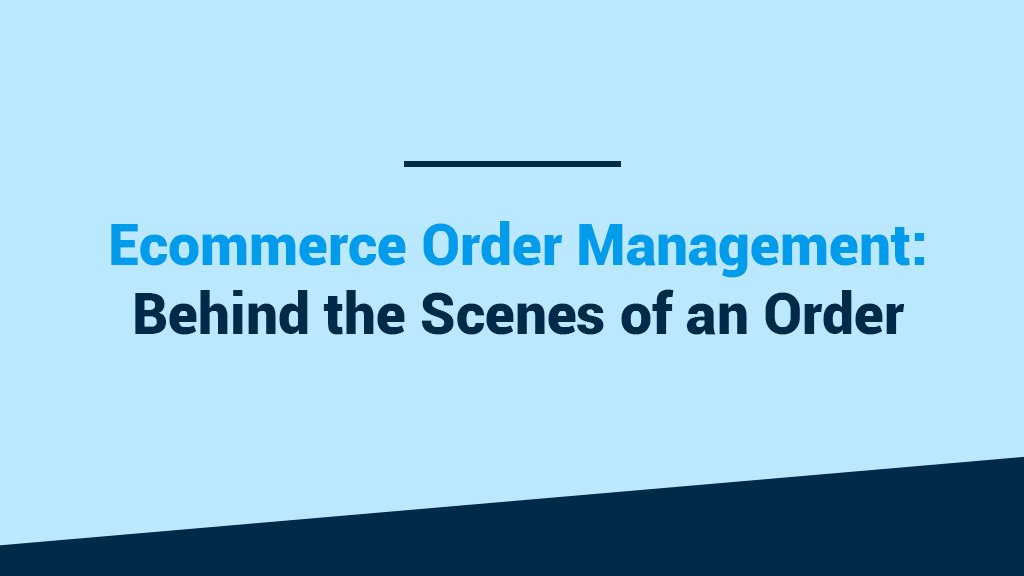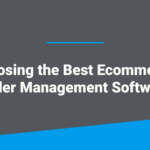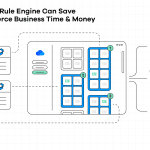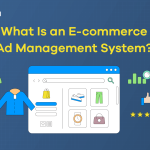
- Ecommerce order management involves every step of fulfilling an order, ensuring accuracy, efficiency, and customer satisfaction.
- Descartes Sellercloud and Skustack enhance ecommerce order management with tools for inventory, order management, an extensive number of integrations, and much more.
Online shopping offers customers unprecedented ease and accessibility, and as the demand for online shopping grows, it becomes more critical that ecommerce order management moves smoothly. 2025 could be even busier than previous years for ecommerce sellers. According to a 2024 Retail Dive article, 42% of US consumers “say they plan to spend more online over the next 12 months.”
However, behind every click is a complex network of processes ensuring the order reaches your doorstep seamlessly. In this article, we’ll explain what ecommerce order management is and take you through the timeline of an order.
Are you looking to learn more about order management? Check out our Order Management guide here.
What Is Ecommerce Order Management?
‘Ecommerce order management’ covers all tasks related to sending an ecommerce order to a customer, from order placement and inventory management to last-mile delivery to managing returns (if applicable) and ultimately measuring customer satisfaction. Well-optimized ecommerce order management reduces errors, minimizes delays, and improves customer satisfaction—key factors for online retailers to remain competitive and expand in a fast-paced market.
Modern ecommerce companies rely on ecommerce solutions to consolidate their operations, enabling them to streamline workflows and scale as their businesses grow. Let’s look at all the ecommerce order management involved in delivering an order.
Ecommerce Order Management from Start to Finish

From a customer’s perspective, the journey of an ecommerce order begins when they click ‘Buy Now’ and ends with a successful delivery. Let’s break down the process:
1. Order Placement
Order placement is where the customer selects products and completes checkout. It could occur on a marketplace, via your website, or through another channel. According to research by the Baymard Institute, the average abandoned cart rate is 70.19%, making this a critical point to optimize user experience.
Offering guest checkout, multiple payment options, and fast-loading pages can help ensure customers complete their purchases.
2. Order Verification
Before processing the payment, many businesses use fraud detection systems to verify the order’s legitimacy. This step ensures the customer’s payment method is valid, helping reduce fraud risks and chargebacks. Address verification systems and other tools also confirm that the delivery address matches the billing address, providing an additional layer of security. If there is something suspicious about an order, customer service can investigate if there is an issue.
Large, high-value orders can also be flagged at this stage so customer service can reach out to the customer and confirm that the details are correct. Flagging these orders is essential just in case the customer makes an error, either adding an incorrect volume or not realizing how expensive an order item is.
3. Payment Processing
Once the order is verified, payment details are processed through secure payment gateways. This step ensures the transaction is completed safely and funds are transferred to the retailer. Payment systems also encrypt sensitive customer information to protect against fraud.
Learn how Descartes Sellercloud’s Waytopay.me module can help your business with payment processing.
4. Order Confirmation
After the order is placed and the payment is processed, customers receive an order confirmation, typically sent by email. The order confirmation should include details about the items purchased, shipping address, and expected delivery date, which can boost customer satisfaction. This can be an opportunity for customers to change any incorrect information.
Order confirmation reassures them that their order is being processed and reduces anxiety about the status of their purchase.
5. Inventory Allocation
Next, your inventory management system checks stock levels, reserves the purchased items, and deducts them from the total inventory to prevent overselling. When you oversell an item, it means that you have already sold it via one of your channels, and in actuality, you don’t have the item in stock.
Not only does overselling frustrate customers and damage your reputation, but it also increases order cancellations, which may damage your marketplace rating and lead to bans. By integrating real-time inventory tracking tools, sellers can ensure that stock levels are accurate so that overselling does not occur. Inventory allocation is especially critical for businesses operating across multiple sales channels.
6. Warehouse Fulfillment
Once an order is confirmed and inventory is allocated, the order is sent to the warehouse for fulfillment. Warehouse staff gather the items and prepare them for packing. Orders can contain multiple items, and pickers must journey around the warehouse to collect each item. It’s crucial to have efficient processes to ensure the correct products are picked, reducing errors and inefficiencies.
Poor warehouse management can impact other processes, slowing down your ecommerce order management workflow, which can irritate customers who are expecting a speedy delivery. Using a warehouse management system (WMS) is the best way to ensure order items are picked in the most efficient way. They can also prevent incorrect items or variations from being picked, lowering returns.
Discover how Descartes Sellercloud’s Skustack WMS module makes warehouse management easier.
7. Packaging
Once order items are picked, they must be packaged with materials such as air packing bags or bubble wrap to keep them secure. Orders that require refrigeration or contain hazardous items need specific packaging. Using the right amount of packaging is vital for reducing returns. With too little packaging, the product could be damaged in transit and end up being returned. Too much packaging is an unnecessary expense.
Furthermore, a 2022 Dotcom Distribution report states, “69% of consumers reported eco-friendly packaging would make them most likely to shop with a brand again.” So, ensure you don’t scare off return customers with unsustainable packaging. Using branded packaging materials helps brand recognition and can encourage customers to purchase from you again. Taking it one step further, you may include promotional materials in the packaging.
8. Shipping Label Creation
Once the order is packed, it moves to the shipping station, where carrier shipping labels and tracking information are generated, along with a shipping label, which is applied to the package. To generate a label, the shipper uses shipping software that calculates the best rate for the order based on weight, size, destination, and promised delivery time. This is called ‘rate shopping.’
Automated shipping label creation can help businesses save time, minimize human error in labeling, and keep shipping costs affordable. The order then waits for the carrier to arrive for the next step.
Learn how to make rate shopping easier with Shipbridge.
9. Customer Notification and Communication
Keeping customers informed is essential during the order fulfillment process. Automated notifications about their order status—such as processing updates or delays—keep customers engaged and informed. Proactive communication about shipping and delivery windows can significantly improve customer experience, and including tracking links is beneficial for customers and reduces order status inquiries.
Find out how Descartes Sellercloud’s Memaila module can help you manage customer communication.
10. Carrier Handoff
Packages are handed off to carriers like FedEx, UPS, or local delivery services, depending on the service paid for in the previous step. On arrival, the carrier scans the shipping labels and takes the orders to their final destination. Providing real-time tracking updates keeps customers informed and improves the overall customer experience. Customers will see when the order was handed over and left for last-mile delivery.
11. Last-Mile Delivery
Now, the carrier delivers the package to the customer. Typically, ecommerce businesses don’t have much control over this step. Successful first-attempt deliveries reduce costs and increase customer satisfaction (hence the reason why it’s vital to verify customer information early on).
When orders arrive on time and in good condition, it significantly enhances brand loyalty. For many businesses, when the order arrives at the customer’s location and is completed in the order management system, it is considered the end of the order journey. However, there are some additional steps that we will look at next.
12. Post-Sale Support
Reaching out to customers post-sale is a great way to find out if a customer is satisfied and ask for a (ideally positive) review. According to a study by Shep Hyken, an astounding 96% of customers will leave your business for lousy service, and many will not complain.
Post-sales support can inform you of issues you may not be aware of, enabling you to find ways to prevent them from recurring in the future. Positive post-sale interactions can also drive repeat business and enhance brand loyalty.
13. Returns Management
In the best-case scenario, you won’t have to worry about returns (much). Still, they happen, and returns handling is essential to ecommerce order management. Amit RG of Rich Panel says the “average ecommerce return rates hover around 20-30%.” Apparel often has the highest return rate. According to data from Statista, 24% of online US shoppers said they had returned clothing in 2024.
Businesses should offer an easy-to-understand returns policy, ideally with automated return labels. Efficient handling of returns helps improve customer satisfaction and reduces operational costs in the long run. If the returns process is easy, customers are more likely to buy from you again. However, if the process is complicated or long, they can get frustrated, complain, and not buy from you again.
Once returns reach the warehouse, a business must assess whether they can be resold. If so, in what condition and by which channel? If not, the item may need to be destroyed.
Check out how Descartes Sellercloud’s Orderback module can help your business manage returns.
14. Post-Sale Analytics and Customer Insights
Businesses should leverage post-sale data to analyze customer behavior, inventory performance, and sales trends. This can be done periodically, daily, weekly, or monthly—whenever it is most convenient and useful. Analyzing this data can help ecommerce businesses optimize their operations, improve product offerings, and plan more effective marketing strategies.
Understanding customer preferences can also help improve future user experience and retention strategies. It also helps ecommerce businesses forecast product demand more accurately.
How Does Descartes Sellercloud Help Better Manage Ecommerce Order Management?

Descartes Sellercloud overhauls your ecommerce order management process by integrating orders across multiple marketplaces into one unified interface. Its real-time inventory tracking prevents overselling and keeps stock levels consistent in top marketplaces like Amazon and Walmart, as well as your direct-to-consumer (DTC) site, brick-and-mortar store, and other channels.
Meanwhile, Skustack optimizes warehouse operations with features like barcode scanning, real-time task updates, and inventory tracking, ensuring faster and more accurate order fulfillment. Together, they help businesses get orders to customers faster and reduce errors, helping you improve your bottom line and push growth to the next level.
Descartes Sellercloud’s 350+ integrations automate a plethora of processes with the services your business needs to thrive. Plus, more services can easily be added with API and EDI connections. If that wasn’t enough, Descartes Sellercloud is also highly customizable. It can be configured to work around your business—you don’t have to adjust how your company operates to use it.
With the Order Rule Engine, you can create automations to help you streamline your operations.
Ready to see Descartes Sellercloud and Skustack in action? Book a demo today to experience how these tools can transform your ecommerce order management process.
Key Points
You’re now an expert on ecommerce order management! Let’s recap the essentials.
- Ecommerce order management includes everything from order placement to delivery and post-sale support.
- Optimized ecommerce order management reduces errors, minimizes delays, and enhances customer satisfaction.
- Descartes Sellercloud and Skustack simplify inventory management, warehouse efficiency, shipping processes, and much more.
- Using Descartes Sellercloud, businesses can scale their operations and deliver exceptional customer experiences.




